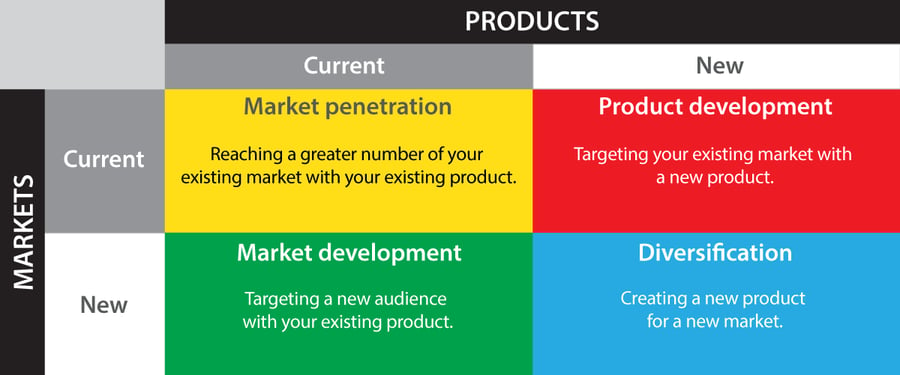Strategy is an important but often overlooked part of business. Few small business owners have the time to form a documented strategic plan. Strategy is a word that encompasses many things but is often confused for tactics, goals, or vision. These terms can overlap but are not the same. Learn more about incorporating strategy into your small business:
What is Strategy exactly?
Strategy can be defined as a firm’s high-level plan for reaching a specific business objective. Strategic plans succeed when they lead to business growth, a strong competitive position, and strong financial performance.
It’s important to note that this says “when business plans succeed”, you achieve strong financial performance. Many people mistake a business plan as getting strong financial performance. That’s not the actual strategy. Strategy is the journey towards strong financial performance.
How do I determine my marketing strategy?
There are many ways to determine your marketing strategy but I find one intuitive way is to take a broad approach through the Ansoff Matrix. Don’t let this strange name dissuade you. When creating an overarching marketing strategy for your business, there are four distinct choices to make. You may already think about this in your own words, but it is always useful to have a mutually-understood term when discussing with partners or investors.
The Ansoff Matrix
- Market Penetration: selling existing products to existing customers
- Market Development: reaching new customers with existing customers
- Product Development: selling new products to existing customers
- Diversification: reaching new customers with new products

Market Penetration is reaching a greater number of your existing market with your existing product.
Product Development is targeting your existing market with a new product
Market Development is targeting a new audience with your existing product
Diversification is creating a new product for a new market.
About The Matrix
The matrix is quite simplistic but a great deal of thought must go into an informed decision.
Oftentimes, business owners will be mistaken into thinking of creating a strategy to increase sales leads, or brand awareness. Ultimately, this is not a strategy, but a means to achieve your strategy. For example, you are aiming for market penetration. In order to reach a greater number of existing customers, you plan to increase brand awareness through email blasts that promote your brand on social media. This is a detailed tactic within your underlying marketing strategy.
In most cases, market penetration is the strategy. Very rarely do businesses undergo diversification unless they are planning some dramatic changes.
Real Life Example
Market Penetration: providing the Olympia Health Spending Account to incorporated small business owners
Market Development: providing the Olympia Health Spending Account to sole proprietors
Product Development: providing a new Olympia product to incorporated small business owners
Diversification: providing a new Olympia product to sole proprietors

Additional Thoughts
A new market can be based on a variety of factors such as region, age, interests, values, and even corporate structure (as mentioned above). Do not be mistaken into thinking that a new market has to be limited to one aspect. You can target two different markets within a region or two different markets within the same age group. There are many different ways to identify a target market or demographic.
Want to learn more about marketing for a small business, Download our FREE Digital Marketing Guide for a Small Business below: